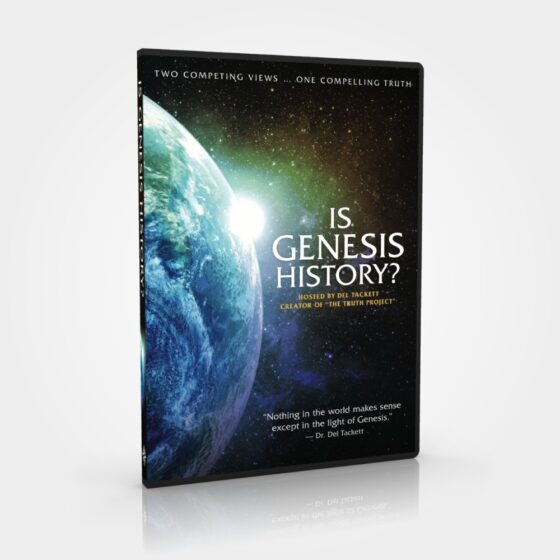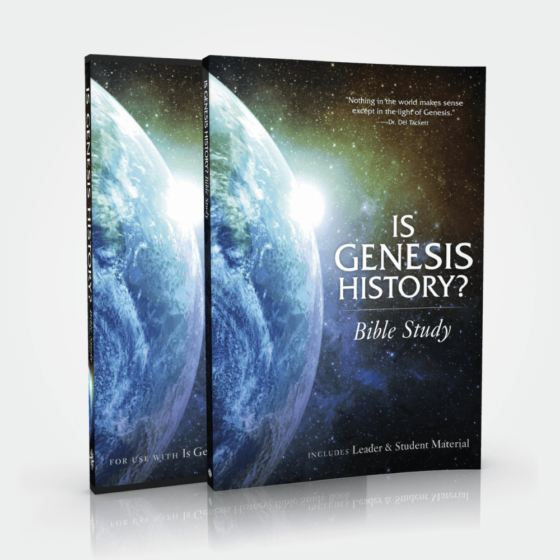Today, there are some Christians who do not think Genesis 1 and 2 should be taken as a literal record of sequential days. Instead, they interpret the days and events of the first chapters of the Bible in a variety of ways, such as a ‘literary framework,’ ‘God’s workdays,’ or as a ‘functional cosmic temple.’
There are useful observations in all these approaches. Aspects of them, in fact, can be found throughout the history of the church’s interpretation of Genesis.
Ancient, medieval, and early modern commentators noticed the parallel literary pattern of three days of forming and three days of filling, or that God acts like a workman in creating the earth, or that the garden of Eden has many similarities to the structure of the tabernacle and temple.
They saw these patterns as quite intentional. The metaphor of a master builder was used for God who, like the architects of the mighty cathedrals, intricately designed real structures to communicate theological truths.

They knew God told Moses in Exodus 25:40 to build the tabernacle “after the pattern…which is being shown you on the mountain.” They also knew the author of Hebrews goes on to explain that this real structure was just “a copy and shadow of the heavenly things.” (Heb 8:5) They understood that God expected us to notice these patterns and figure out what they meant.
This intentionality is why there is so much similarity between Eden, the tabernacle, and “the heavenly things”: they were all designed by the same Designer to be His dwelling place with man. These sorts of connections between reality and theology were obvious to the commentators; when they read the Bible, they saw that God put patterns everywhere He revealed Himself.
Can history be both literal and symbolic?
What makes these patterns so fascinating is that they are actually embedded in real history. There are patterns and symbols throughout the Bible, from the life of Moses to the life of David to the life of Jesus, all of which are equally literal and symbolic.
If God is both transcendent and immanent—and far beyond us in creativity— we should expect that there are numberless things built into the creation and its history that uniquely reveal His delight in patterns as ways to understand Him better.
This is important to note: most commentators throughout the history of the church have understood that, for these patterns to have theological meaning, they had to be historically real. It was not until the era of modern philosophy that a whole discipline of theological thinking arose which separated theology from history. There began to be a view that if something has a pattern, it was structured that way by a later author and was likely not a reflection of real events.
This thinking seems to have influenced contemporary interpretations of the first chapters of Genesis.
Many interpreters see the obvious patterns in the days of creation, and therefore separate those patterns from real history. Whether the pattern is a literary structure, a relationship to workdays, or an image of the temple, commentators assert that the purpose of the early chapters of Genesis is to teach theology rather than history. As a result, these interpretations de-historicize various sections of Genesis.
This creates three basic problems.
1. Modern interpreters do not replace the record in Genesis with another history.
They simply say it isn’t history. But if Genesis isn’t a literal record of events, then what actually happened at the beginning? Considering that the role of Special Revelation is to provide us an accurate record of the words and actions of God in time, it seems strange that the first chapters of that revelation would not do the very thing one would expect it to do: tell us how God created the world and everything in it.
Curiously, this is where modern commentators say they are not scientists and point to the conventional scientific community to provide that history. Although these interpreters would not do this with any other part of the Bible, they do it with Genesis 1 and 2. Leaving aside the question as to whether contemporary scientists are qualified to speak authoritatively on matters of history, the result is that these interpretations are used to justify replacing the Biblical timeline of creation in six days with the conventional timeline of universal formation over billions of years.
2. Modern commentators do not provide any clear consensus as to where to draw the line between what is only theological and what is theological-historical.
In other words, where does real history begin?
There is much discussion of “genre” as being the determining factor, but it quickly becomes subjective as to where one draws the historical line. Considering this is not a problem anywhere else in Genesis (much less the other historical books of the Bible), it leads one to believe that there is not a real distinction here either, and that the earlier commentators were right: Genesis is both literal and symbolic.
3. The witness of other inspired authors creates a significant problem for modern interpretations that seek to separate the theological and the historical.
Shouldn’t we rely on the interpretations of men like Jesus, Paul, and Peter for understanding what the text actually means?
Even in the Old Testament, the prophet Isaiah provides more than sufficient evidence that the theology and history of Genesis are inseparably joined. He quotes God Himself saying that the doctrine of creation is the primary reason He can be trusted in all matters, including His control of world events.
Thus says God, the Lord, who created the heavens and stretched them out, who spread out the earth and what comes from it, who gives breath to the people on it and spirit to those who walk in it: “I am the Lord; I have called you in righteousness; I will take you by the hand and keep you; I will give you as a covenant for the people, a light for the nations…” (Isaiah 42:5-6)
It is obvious that Biblical authors were familiar with the text of Genesis and saw how it connects to the real world. This is why their views must come prior to recent attempts at re-interpretation through the discovery of Ancient Near Eastern texts such as the Gilgamesh epic, Enuma Elish, or others. If anything, these texts are confirmation that the ancient pagan world retained something of its memory of the global flood and the world before it.
Even in the Old Testament, the prophet Isaiah provides more than sufficient evidence that the theology and history of Genesis are inseparably joined.
When, however, one looks at the Biblical text in comparison with these pagan documents, the differences are significant.
From the transcendence of God, to the consequences of moral choices for the created order, to the realistic presentation of people and events, there are an overwhelming number of indicators, both within the early chapters and within other parts of the Bible, that Genesis is a literal account of history. This is the perspective of Jesus and His disciples.

Why Should Genesis 1 be considered History?
Besides what has already been said, here are a number of additional reasons why Genesis 1 should be seen as literal history formed by God with symbolic intent:
1. The Hebrew word for ‘day’
The use of the Hebrew word ‘day’ (yom) modified by the cardinal numbers ‘one,’ ‘two,’ ‘three,’ ‘four,’ ‘five,’ and ‘six,’ alongside the nouns ‘morning’ and ‘evening’ are all specific time indicators referring to a normal week. This is the common vocabulary we see in ancient times, medieval times, and modern times.
Wherever these words are used in other parts of the Pentateuch or other historical narratives of the Bible, we interpret them as referring to normal time. In fact, the Hebrews who translated Genesis into Greek for the Septuagint in the 2nd century B.C. used the normal Greek word for a 24-hour day in Genesis 1, even though there were other Greek words that signified a long period of time.
2. The use of ‘day’ in the rest of the Old Testament
Although there are a handful of instances of ‘day’ being used in non-literal ways in the Old Testament, it is clear from usage and context these are not the case in Genesis 1. Theologian Geerhardus Vos explains, “It is not accurate to say that the days are God’s days. God ad intra does not have days. Creation is an act proceeding outwardly from God…. Appealing to the eternal Sabbath is also of no avail. Although God’s Sabbath is certainly endless, that cannot be said of the first Sabbath…. The use of the term ‘day’ in Genesis 2:4 is figurative, but in Genesis 1 figurative language is not used. What one must show is another place in Scripture where a first, a second, a third day, etc., are just as sharply separated and and nevertheless describe periods of time. The ‘day of the Lord’ of the prophets refers to a specific day—that is, a day on which the Lord appears for judgment, even though His judgment may last longer than one day.”
3. Specific Statements in Exodus
There are numerous statements in Exodus that compare the duration of God’s creation to something already familiar to the enslaved Hebrews: one week of seven days. The most well-known of these is integral to the Fourth Commandment.
“Remember the Sabbath day, to keep it holy. Six days you shall labor, and do all your work, but the seventh day is a Sabbath to the Lord your God…. For in six days the Lord made heaven and earth, the sea, and all that is in them, and rested on the seventh day. Therefore the Lord blessed the Sabbath day and made it holy.” (Exodus 20:8,11)
4. A Record of What Happened In the Beginning
Genesis provides what one would expect at the beginning of a universal history: a record of what actually happened in the beginning. Often, the ‘superiority of the present’ is invoked to say the Israelites were a primitive people who could not understand what actually happened; but this is pure speculation that runs counter to the witness of the rest of the Bible.
The observation that God provided an account so different in structure and content from other literature in the Ancient Near East is testimony that He gave them the one accurate account, especially considering they were surrounded by Egyptian creation stories. He certainly wasn’t waiting 3500 years for a handful of scientists in the mid 20th-century to finally explain what He actually did in the beginning.
5. It is Consistent Narrative History
Genesis 1 and 2 are narrative history, as can be seen in the way events flow from one to another through chapter 3 and forward. Again, Vos explains, “within the narrative of Scripture, the creation narrative is interwoven like a link in the chain of God’s saving acts. God does not make a chain of solid gold, in which the first link is a floral wreath. If the creation history is an allegory, then the narrative concerning the fall and everything further that follows can also be allegory. The writer of the Pentateuch presents his work entirely as history.”
Any attempt to find additional time between the morning/evening/day repetition, or to see the days as a list of highlights over a long period, or to call it poetry, is a rejection of basic linguistic aspects of the text.
6. Statistical Analysis of Hebrew Verbs
Dr. Steve Boyd’s statistical analysis of the Hebrew verbs used in Genesis 1:1-2:4 in comparison with other narrative passages of the Old Testament reveals a “99.5% confidence level” that the passage is narrative history. As he explains, “the weight of evidence is so overwhelming that we must acknowledge that Biblical authors believed that they were recounting real events. We must therefore call their work history.” (Read the full paper here.)
7. Significant Numerical Harmony
There is a significant “numerical harmony” based on the numbers three and seven in Genesis 1:1-2:4. Rabbinic scholar Umberto Cassuto observes that:
- The entire section is divided into seven paragraphs, one per day.
- The nouns God, heaven, and earth are repeated in multiples of seven throughout the passage: God 35 times, heaven 21 times, and earth 21 times.
- Light and day are each mentioned seven times in the first paragraph. Light is mentioned seven times in the fourth paragraph.
- Water is mentioned seven times in paragraphs two and three together.
- Beasts is mentioned seven times in paragraphs five and six together.
- The expression it was good appears seven times.
- The first verse has seven words; the second verse contains fourteen words; and the seventh paragraph has three sentences, each of which contains seven words and has the expression the seventh day in the middle.
Cassuto finishes his overview with the final observation, “to suppose all of this is a mere coincidence is not possible.”
8. Numerous Chiastic Structures
James Jordan identifies numerous chisastic structures in the first chapter of Genesis. Chiasm is a literary structure based on the Greek letter chi (X). This structure basically follows a pattern that inverts itself as it describes a flow of events, such as A,B,C,D,C’,B’,A’ with D being in the center. Jordon observes numerous chiastic structures within the passage, from the days of creation, to what is being created, to what is being signified.
Chiasms linked to history can be found throughout the rest of the Bible, too, as Gordon Wenham has observed with the flood account and Kenneth Bailey with a large section of Luke. Such consistent patterns in historical narratives are additional evidence that God was ordering events according to His own purposes.
Final Thoughts
In light of all these points, how is it possible that some modern interpreters want to deny that Genesis 1 is literal history?
It seems the primary rationale to de-historicize Genesis is what Steve Boyd explains in the film. He observes,“the only way you’d want yom [day] to mean a longer period of time is if you impose an alien concept, a hermeneutical concept, to the text and say, ‘Well, I think that these are ages therefore yom has to mean ages.’ What we have to do is start with the text. If we start with the text yom means ‘day.’”
This desire to impose ‘an alien concept’ on Genesis is extremely strong today, especially in academic circles. We should therefore not underestimate its pervasive influence on the church, nor mistake its long-term consequences. The Bible’s ability to accurately represent history is at the center of Christian doctrine, most particularly the doctrine of creation; it is this doctrine which sits at the foundation of all our theology.
This material is part of the ‘Is Genesis History?’ Bible Study. It includes 6 video segments and 6 in-depth chapters exploring Genesis in light of the entire Bible.



